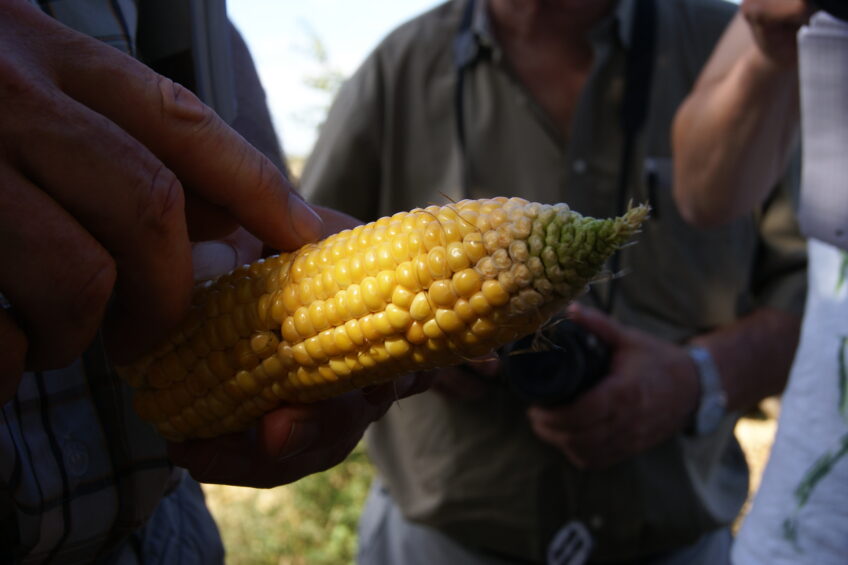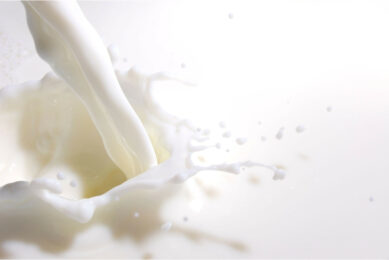Producing the best silage maize for cows

Maize seed is a science that has evolved to a great extent over the last decades, especially since the introduction of hybrids. Hybrid varieties of maize were introduced from the US to Europe in the 1950s. Since then, many improvements have been made in making the maize better, more digestible, more suitable for dry climates and more efficient.
Dedicated maize silage research
Maize silage is a popular roughage to feed to dairy cows and a tool to help dairy farms intensify when limited land is available. According to Arvalis – Institut du Végétal (the French arable crops R&D institute), increased yields in silage maize have been the result of genetics and better farming practices.
Genetic progress has been made easier by using genotyping tools, statistical and IT methods and phenotyping for example. At Limagrain Europe, 140 different maize seed varieties are produced and a lot of attention is paid to studying new varieties, specifically for use as silage feed. “We invest a lot of time and effort to study the effect of our silage maize varieties in the animals and have carried out a set of trials to test for digestibility, feed efficiency and effect on milk production for example,” explains Benoît Delord, animal nutrition project manager at Limagain Europe.
“In 1977, our company split the grain maize breeding program from the silage maize breeding program and in 1997, we started the LG Animal Nutrition concept, dedicated to studying maize varieties and their applications and effects for animals. We have dedicated research on fibre digestibility for example, which taught us that variability of digestibility is linked to the content and the organisation of the cell wall structure.
Digestibility of cell walls in turn depends on the possibility for ruminal cellulolytic bacteria to access digestible fibres. But we also look closely at starch digestibility, dry matter content at harvest and the fermenting/ensiling period amongst others. Starch digestibility is a complicated topic. There is a big genetic variability of Starch Rumen Degradability (SRD) so it is important to be able to characterise our varieties,” according to Delord. To test the quality of the maize silage, Limagrain uses online NIRS in the silage chopper to measure the yield, energy content, composition (starch, protein, energy and NDF) and the digestibility. This has generated a wealth of data over the last years. With this data, the breeding company can predict the nutrient levels of the plant more easily. “We analyse around 200,000 samples per year,” explains Delord.
Economic benefit for the farmer
Thanks to improvements made in the last few years, and use of new tools and methods, NDF digestibility can get very close to bm3 hybrids,” says Delord. Brown midrib (BM) hybrids have a naturally occurring gene that reduces lignin in the cornstalk, hence improving the fibre digestibility. The bm3 mutation is known to have the highest digestibility over other bm mutations. “A higher digestibility can save the dairy farmer feed costs, as less feed is needed to produce the milk. This is very important as milk prices are low in Europe,” adds Delord.
“Within the LGAN concept, our ambition is to continue to provide the best maize genetics for the dairy farmers and the cattle producers. Our research keeps on breeding high yielding and high quality (digestibility and energy content) varieties. We believe that in the current challenging economic situation, good quality forages will help the farmers to improve their profitability thanks to a better feed efficiency. Also we will continue to assist farmers with different services (LG LAB portable NIRS, decision support tool to predict maize silage harvest date) to help them to produce good quality forages and while remaining competitive. Maize silage will continue to be a really cost-effective forage for producing milk in Europe. This is our commitment through the LGAN approach,” concludes Delord.
Join 13,000+ subscribers
Subscribe to our newsletter to stay updated about all the need-to-know content in the dairy sector, two times a week.











